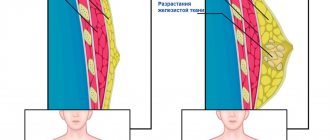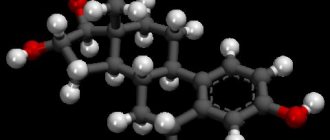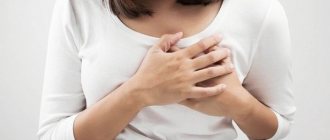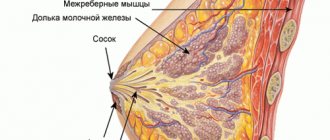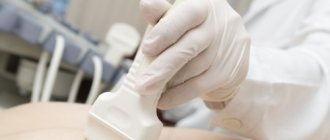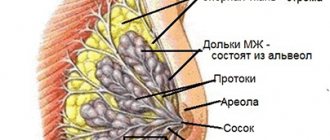Perhaps almost all women have encountered such a phenomenon as breast enlargement. Most often this happens regularly and is associated with a certain period of the menstrual cycle, in particular with the onset of ovulation. But any representative of the fair sex is recommended to know all the reasons why breasts may become enlarged, since this metamorphosis is not always harmless. How to recognize the true factors that influenced changes in breast volume? And what to do if swollen glands cause discomfort and make a woman anxious?
Pain without pathologies
Occasional breast tenderness is normal. Typically, pain in both glands occurs before menstruation, during pregnancy, or when taking hormonal medications prescribed by a gynecologist to alleviate the difficulties associated with menopause in women. Swelling of the mammary glands due to the use of hormonal contraceptives in young representatives of the fair sex is quite rare.
It is normal for the mammary glands to swell before menstruation or after conception (should not cause panic or mild pain at this time). During menstruation and as pregnancy progresses, pain and swelling disappear.
The normal condition is when a small amount of liquid is released from the nipples when pressed, sometimes 1 drop. A transparent or slightly cloudy, even greenish substance is not a bad omen. This slight discharge usually occurs before menstruation and may persist for several months after breastfeeding. If the discharge is profuse and accompanied by severe breast swelling with the presence of lumps, it is advisable to consult a doctor.
Occasional breast tenderness is normal.
Taking contraceptive and hormonal medications
Pills that protect against unwanted pregnancy contain synthetic or plant analogues of the hormones estrogen and prolactin. The mammary gland reacts to these substances by increasing in volume. Specialized creams and gels operate on the same principle, causing the bust to swell, become voluminous and sexy. But the effect of this technique lasts only as long as the woman uses the product. After the supply of hormones from the outside stops, the breasts return to their natural appearance.
We also recommend viewing: Causes of pain in the mammary glands
Discomfort as a consequence of the disease
It is abnormal when the breast suddenly not only swells, but a tangible, dense formation appears that was previously absent. This does not always mean the development of a malignant tumor. Cysts may develop in the breast, the gland may become full due to hormonal disorders, and a benign neoplasm may occur. In any case, you will need to undergo a mammogram or ultrasound.
It is not normal for the mammary glands to swell and hurt along with the appearance of bloody discharge from the nipple. A brown or even bright red color should be a warning that you should not overlook and seek immediate medical attention.
It is not normal when the breast suddenly not only swells, but a tangible, dense formation appears that was previously absent
It’s bad when the nipple suddenly pulls in and doesn’t push out. Sometimes this problem is accompanied by breast swelling. In some women, nipple retraction occurs due to inflammation of the mammary gland, in others - for no apparent reason. In any case, an examination is necessary.
The causes of breast swelling are varied. Therefore, anything that seems “abnormal” should bring a woman to the doctor’s office. The specialist can refer her to a specialized center for a mammogram, which will determine exactly why the breasts are swollen and sore, and whether a serious problem is developing.
Features of the body
To determine whether your breasts are sensitive or not, you should apply gentle pressure on them during menstruation. If pain, tingling or discomfort is felt, then the mammary glands are sensitive. Also, an indicator of sensitivity is the freezing of the chest in the cold season, despite the fact that a person is warmly dressed. To avoid this, you should wear a cotton T-shirt (sweatshirt) over your underwear, and any woolen clothing over it.
It is necessary to choose the right underwear so that it does not pinch and is pleasant to the body . It is worth choosing sets without seams and without pits, with soft liners inside. To visually enlarge or lift the pectoral muscles, you can purchase a foam rubber bra with a push-pull effect. But it should also be made from natural materials and without seams.
Diet lovers need to choose a gentle menu that will allow them to lose weight smoothly and evenly. A sharp decrease in weight will lead to sagging breasts and a decrease in their elasticity.
Signals of carcinoma
Some pathological signs may indicate malignancy. Which of the “abnormal” symptoms should cause immediate examination - this is when one breast suddenly turns red at normal body temperature. The gland may become red and swollen due to inflammation, but these symptoms may also indicate cancer.
During inflammation, redness of the breast is accompanied by discomfort. The chest hurts so much that even the slightest touch is unpleasant. If the gland turns red in the absence of pain, this is a serious symptom that should be addressed to a doctor without delay.
Some pathological signs may indicate malignancy
It is not normal for a condition when a retraction forms on the skin of the chest that was not there before. It resembles a dimple, noticeable when a woman raises her arms above her head. If at the same time the mammary glands are swollen, consult a doctor immediately. This sign may indicate carcinoma.
It is not normal for the breast skin to begin to change. The gland itself may hurt, the pores on the skin become more noticeable and resemble an orange peel. In this case, we may be talking about carcinoma (there is usually no discomfort) or an inflammatory process (chest pain).
If the skin around the nipple and areola begins to peel off greatly, its scales stick to clothes, then this is also bad. The skin is so sensitive that small bleeding cracks easily form on it. We are not talking about bloody discharge from the nipple, but about light bleeding from the epidermis around the nipple. In this case, the nipple and areola itself may become slightly engorged. In this case, a fungal infection or even nipple cancer may occur.
Breast swelling in children
When a newborn's mammary glands are swollen, this means that his body has begun to undergo restructuring. Estrogen, which is passed on to the child from the mother during pregnancy, decreases sharply and hormonal disruption occurs.
This occurs more often in girls, but males often experience these changes. According to statistics, 50% of boys had this condition. After 4 weeks, the breast lump should go away on its own. At the same time, parents should strictly monitor the condition of the glands and consult a doctor if there is any suspicion.
If the baby experiences an increase in temperature around inflammation, hot skin, pain and a thickening that is constantly increasing, a doctor’s examination is necessary. These are all signs of mastitis, which can greatly harm the baby.
For mastitis, take antibiotics, anti-inflammatory drugs, special ointments and solutions for compresses. If an abscess has developed, then prompt opening of the source of inflammation and washing is necessary.
Problems with hormones
Some women suffer from mastodynia from the 2nd half of the menstrual cycle, i.e. immediately after ovulation. The symptoms can be very unpleasant. Mastodynia can be the answer to the question of why breasts swell between cycles. In this case, typical tension and pain in the chest appears, becoming severe and very sensitive to touch. The following symptoms are characteristic of mastodynia:
- pain in the mammary gland without pathological causes;
- mastalgia.
Another hormonal reason why the mammary glands swell is mastopathy. We are talking about a non-inflammatory benign disease of the female breast. The basis of the pathology is characteristic changes in the mammary gland caused by hormonal influences.
Mastopathy is characterized by the following clinical manifestations:
- breast swelling;
- pain;
- formation of cysts or lumps;
- changes may increase during the menstrual cycle.
Mastopathy is a very common disease, the development of which is indicated by about half of women.
There is no doubt that breasts can become engorged due to the effects of hormones. In some women, hormonal disorders provoke the formation of cysts or lumps in the breasts, for example, the mastopathy described above. Cysts change during the menstrual cycle, often dissolve along with menstruation, and are created again in the 2nd half of the cycle, causing soreness of the mammary glands. At the same time, the breasts become engorged and become overly sensitive.
The condition must be monitored and any changes that could lead to the development of breast cancer must be promptly identified using ultrasound. Women with cysts and lumps in the breast should be very careful, because they are at risk for cancer.
Main reasons
Breast swelling in most women is associated with the phases of the menstrual cycle. Physiological and pathological factors can provoke swelling. In the first case, these are natural processes that every woman faces. But swelling is often one of the first signs of serious pathologies of the breast tissue.
Physiological factors
For most women, their breasts swell slightly midway through their menstrual cycle. In this case, the condition is accompanied by a slight nagging pain. This is due to ovulation and the release of hormones responsible for reproductive function. Progesterone helps increase breast volume and sensitivity.
If there are no periods, but pain and swelling remain, this is a sign that conception has occurred. Throughout the first trimester of pregnancy, the bust will increase, in the second this process will stop, and in the third it will resume.
Breast swelling may persist after childbirth - the hormone prolactin, which is responsible for milk production, will already act here. To reduce discomfort and avoid stagnant processes, you need to establish feeding - correctly apply the baby to the breast on demand, and pump when there is excess milk. Check your breasts for lumps and blocked ducts, and if there is excess milk, express it. Self-massage of the glands with soft circular movements is useful.
Other natural causes of swollen breasts include:
- Infantile restructuring of the body. The level of estrogen, which is passed on to the newborn from the mother, drops sharply, causing hormonal disruption. This phenomenon is usually observed in little girls, but sometimes occurs in boys.
- Hormonal changes during puberty. Bust enlargement in teenage girls does not occur without discomfort.
- Wearing uncomfortable underwear. Tight bras with underwire can cause chafing and swelling in the breast area.
During menopause, women experience discomfort - the breasts swell, and a swelling forms underneath. This is due to the fact that glandular tissue is being replaced by adipose tissue. At the beginning of menopause, the risk of fibrocystic mastopathy is high. If painful lumps appear, you should consult a gynecologist. He will prescribe supportive medications and a suitable vitamin complex. The woman herself needs to exclude salty and caffeine-containing foods from her diet, and make lotions and compresses.
Possible pathologies
Lactostasis
If the mammary gland is swollen, swollen and painful, this may indicate the following ailments:
- Lactostasis. Breast disease occurs during breastfeeding due to blockage of the duct. It is characterized by pain, compaction and increased temperature in the affected areas. With regular breastfeeding, it may go away without additional therapy.
- Acute mastitis. Causes severe pulsating pain in the affected area, an increase in the size of the mammary glands, changes in tissue density, the appearance of infiltration, and purulent discharge from the nipples. Also, the development of the disease is indicated by a rise in body temperature and chills.
- Different forms of mastopathy. The breasts swell due to a violation of the venous outflow and the accumulation of secretions in the lumen of the ducts, which passes into the space between the cells. Swelling is accompanied by cyclic pain, intensifying immediately before the critical days, and fluid discharge from the nipples. Men may also experience mastopathy in adulthood due to weakened synthesis of male sex hormones.
- Fibroadenoma. The neoplasm is a consequence of fibrous mastopathy and is formed due to hormonal disorders.
- Breast cyst. It can occur when the ducts are blocked due to an increase in estrogen production. At first, the pathology does not cause concern, but when it becomes inflamed, the breasts become very painful, swell, turn red, and the temperature may rise.
- Malignant tumor. Cancer may be indicated by changes in the structure and appearance of the skin over the tumor, proliferation of lymph nodes, and changes in the shape of the nipple.
Breast swelling also occurs after surgery. The causes of edema and swelling of the mammary gland after surgery are due to impaired lymphatic drainage. Liquid, accumulating in soft tissues, causes an increase in their volume and skin tension. It compresses the blood vessels, resulting in impaired blood flow. Such a violation of trophism worsens the situation, complicating recovery.
When removing a small benign tumor, a sectoral resection is performed. Breast swelling after surgery is insignificant and goes away within one and a half to two weeks. The same applies to mammoplasty if it is performed by a qualified surgeon.
Premenstrual syndrome
One can imagine biological warfare in which the battle takes place in the female body. Once a month, about 2 weeks before your period begins, the warring armies of estrogen and progesterone begin to build up. These hormones regulate the menstrual cycle and affect the central nervous system, usually together. Problems arise when one side tries to overpower the other.
This war could rage for days. The woman feels “bloated” and notices weight gain. Head and back pain, acne or allergies are not uncommon. Breast sensitivity deserves special attention. A woman is haunted by cravings, for example, for ice cream and chips. The mood fluctuates for no reason, euphoria is replaced by depression literally every minute, a woman wants to cry and laugh at the same time.
Sometimes breast swelling can be a sign of malignancy
Then both hormonal armies withdraw their troops, calm returns and, finally, menstruation arrives. Therefore, if your breasts become full at the same time as the above symptoms about a week before menstruation, then there is no reason for increased concern. Finding out the answer to the question of why the breasts are swollen can be left for later, since, most likely, we are talking about PMS.
Women suffering from PMS complain of various symptoms. Therefore, deciding how best to treat premenstrual problems is not always an easy one. This is a very individual question.
If the main problem of PMS is pain and swelling of the gland, then this is only half the problem. It is the accompanying symptoms that are often considered more severe. Since the exact causes of the condition are not known (the terms hormonal imbalance or stress are used in the etiology), it is impossible to effectively treat this syndrome. Quiet mode is usually recommended. If the problems are pronounced (the breasts may swell greatly), the leading symptoms are usually eliminated.
Additional diagnostics
Any preliminary diagnosis requires further verification using additional methods. It is possible to say exactly why your breasts are enlarged and painful only after a comprehensive examination, including laboratory tests and instrumental procedures. Based on the clinical situation, the doctor recommends that the woman undergo:
- General blood and urine tests.
- Blood biochemistry (hormonal spectrum, tumor markers, inflammation indicators, antibodies, etc.).
- Analysis of nipple discharge (microscopy, bacteriology, for atypical cells).
- Mammography.
- Ultrasound of the mammary glands.
- Tomography.
- Biopsy with histological examination of the material.
Based on the research results, the doctor makes a final conclusion and plans treatment measures. And the effect of any therapy will be better the earlier the disease is detected. Therefore, women should always be careful about their breasts, and if alarming symptoms appear, immediately seek medical help. Even the most dangerous diseases can be successfully treated while they have just begun to develop.
Perhaps almost all women have encountered such a phenomenon as. Most often, this happens regularly and is associated with a certain period of the menstrual cycle, in particular with the onset of ovulation. But any representative of the fair sex is recommended to know all the reasons why breasts may become enlarged, since this metamorphosis is not always harmless. How to recognize the true factors that influenced changes in breast volume? And what to do if swollen glands cause discomfort and make a woman anxious?
Before discussing the possible reasons why breasts may become enlarged, it is necessary to understand all the intricacies of its structure. - a complex formation that includes three types of tissues:
- Glandular
- Connective
- Fat
The glandular tissue is precisely the part of the breast in which the milk ducts leading to the nipple pass. It can be called the main tissue, since it and only it is responsible for the formation and secretion of milk during lactation. The shape and size of the bust is given by adipose tissue - the more it is, the larger the size. That is why, with a sudden weight loss, a woman’s breasts also drop significantly. Connective tissue becomes a kind of layer between glandular tissue and adipose tissue.
In addition to tissues, the glands also contain numerous blood vessels and nerve endings. During puberty, a girl’s body begins to actively produce female hormones that affect the condition of the breasts. The glands begin to swell, become sensitive and painful. This process continues until about age 20 and is finally completed by age 25.
Changes in breast size can be caused both by natural causes associated with hormonal changes during certain periods of life, and by various pathological phenomena, both in the mammary glands themselves and in the body as a whole.
Malignant neoplasms
Sometimes breast swelling can be a sign of malignancy. However, in addition to the fact that the breasts are full, as a rule, other signs are present:
- Lumps. Most neoplasms in the mammary gland are benign. Some women even have a “lumpy” organ structure, which is normal. Much depends on whether the swelling and growing lump that appears belongs to the structure of the gland, subcutaneous tissue, or the skin itself.
- Skin retraction. This is one of the most obvious symptoms. Dimples on the chest appear especially when a woman slowly raises her arms above her head. Asymmetrical depressions in the skin immediately raise bad suspicions. In this case, the gland does not necessarily have to “inflate”.
- Redness of the skin. Erythema can also be a sign of cancer. If a red area of the skin is associated with pain, which every woman who has suffered inflammation of the mammary gland during lactation knows, most likely we are talking about a similar process. If the lymph nodes in the corresponding armpit are enlarged and/or the breasts are swollen, you should consult a doctor.
In any case, if there are changes in the mammary gland, it is advisable to consult a specialist. It is better to worry in vain than to subsequently treat an advanced disease.
Other factors
Breasts can increase not only due to any internal hormonal or pathological changes, but also under the influence of other factors.
We are primarily talking about weight gain: when a woman begins to gain weight, first of all her stomach and chest become rounder, those areas that represent a strategic reserve of adipose tissue. Therefore, before you panic about your suddenly enlarged bust, you should make sure you haven’t gained a couple of extra pounds over the last month? In this case, a light diet will allow you to return to your previous size.
Experts also recommend that a woman evaluate her diet. Perhaps, recently it contains quite a lot of products containing so-called phytoestrogens, substances similar in their properties to natural estrogen produced in the body. These products include:
- soybeans and various soy products
- legumes (beans, peas, lentils)
- white cabbage, cauliflower and Brussels sprouts
- many seasonings (ginger, turmeric, sage, anise, cloves, thyme)
Usually, adding these products to the diet in adequate quantities will not only slightly correct the shape of the bust, but will also have a beneficial effect on its condition.
Diagnostics
Without a complete examination, it is impossible to determine the cause of the symptom.
Therefore, diagnosis is necessary:
- Taking a general blood and urine test.
- Palpation of the mammary glands. Thanks to this method, you can notice changes in the structure of the breast.
- Ultrasound examination (ultrasound). The procedure is prescribed as a preventive measure or for diagnosing diseases. Ultrasound is also used in cases where x-rays are contraindicated.
- X-ray.
- Mammography is a general x-ray examination. The result is pictures of the breast in different projections. The procedure may be prescribed if a disease is suspected or for preventive purposes. Radiation from mammography is minimal.
- Sight radiograph. The procedure is a detailed examination of a separate area of the breast. For example, if it was poorly visible in the general picture. The image is enlarged 1.5 - 2 times.
- Fluorography. The study is aimed at identifying lung diseases (pneumonia, bronchitis), but can determine pathologies of the mammary glands.
- Computer (CT) or magnetic resonance (MRI) imaging. One of the procedures is used if, as a result of ultrasound or x-ray, there is a suspicion of pathology. CT and MRI are more accurate methods used to determine the tumor.
- Cytological examination. Another method is called biopsy. The test can accurately determine the presence of cancer. A tissue sample is taken from the mammary gland (the process is monitored by an ultrasound machine) and sent to the laboratory.
- Immunohistochemical (IHC) study. The procedure helps determine the growth rate of a malignant tumor and make a prognosis for the development of the tumor.
UpSize is an effective breast enlargement product on the market
Many modern women are faced with the need for aesthetic bust modeling. Almost everyone wants luxurious shapes. And it’s not surprising, because the neckline has always been an area of increased attention for men.
As a result of daily use of the cream, after 3-4 weeks the volume of the breast increases, the shape becomes more rounded and toned; the skin is elastic and velvety.
The cream has undergone clinical trials conducted by specialists from the World Health Organization in 14 countries. Thousands of women have been convinced of the effectiveness of UPSIZE cream.
- Deoximiroestrol
has a pronounced rejuvenating effect, promotes breast growth;
- Pueraria Mirifica Root Extract
effectively nourishes and protects the skin;
- Rose essential oil
increases skin firmness and elasticity, eliminates and prevents stretch marks.
We recommend!
Do you look with envy at busty beauties who, with just their appearance, attract all the looks of men? And they seem to have some kind of natural femininity. But a small bust is no longer a death sentence! Find out how to enlarge your breasts once and for all... Read more »
(function(w, d, n, s, t) { w = w || []; w.push(function() { Ya.Context.AdvManager.render({ blockId: 'RA-449633-8', renderTo : 'yandex_rtb_R-A-449633-8', async: true }); }); t = d.getElementsByTagName('script'); s = d.createElement('script'); s.type = 'text/javascript '; s.src = '//an.yandex.ru/system/context.js'; s.async = true; t.parentNode.insertBefore(s, t); })(this, this.document, 'yandexContextAsyncCallbacks '); (function(w, d, n, s, t) { w = w || []; w.push(function() { Ya.Context.AdvManager.render({ blockId: 'RA-449633-10', renderTo : 'yandex_rtb_R-A-449633-10', async: true }); }); t = d.getElementsByTagName('script'); s = d.createElement('script'); s.type = 'text/javascript '; s.src = '//an.yandex.ru/system/context.js'; s.async = true; t.parentNode.insertBefore(s, t); })(this, this.document, 'yandexContextAsyncCallbacks '); (function(w, d, n, s, t) { w = w || []; w.push(function() { Ya.Context.AdvManager.render({ blockId: 'RA-449633-6', renderTo : 'yandex_rtb_R-A-449633-6', async: true }); }); t = d.getElementsByTagName('script'); s = d.createElement('script'); s.type = 'text/javascript '; s.src = '//an.yandex.ru/system/context.js'; s.async = true; t.parentNode.insertBefore(s, t); })(this, this.document, 'yandexContextAsyncCallbacks ');
(function(w, d, n, s, t) { w = w || []; w.push(function() { Ya.Context.AdvManager.render({ blockId: 'RA-449633-3', renderTo : 'yandex_rtb_R-A-449633-3', async: true }); }); t = d.getElementsByTagName('script'); s = d.createElement('script'); s.type = 'text/javascript '; s.src = '//an.yandex.ru/system/context.js'; s.async = true; t.parentNode.insertBefore(s, t); })(this, this.document, 'yandexContextAsyncCallbacks ');
